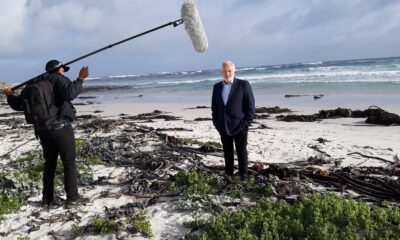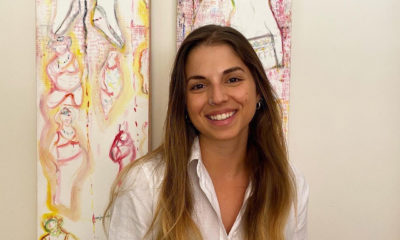
Lifestyle

Paradise and peril: Wild Zambezi on the big screen
Daron Chatz’s four-part wildlife docuseries Wild Zambezi opened this month at Ster-Kinekor in celebration of World Wildlife Month. Chatz, who directed the series, gives us an insight into its magic.

What was the inspiration for Wild Zambezi?
The project was initiated by my co-director, Grace Harrison, and inspired by our collective interest in telling compelling and entertaining stories that mean something.
In this instance, we were drawing attention to the question, “Are we truly going to protect the world’s last pristine nature strongholds, or are we going to make decisions that will be devastating to our precious planet?”
We were inspired to communicate how important it is to make a stand and set a precedent.
What do you hope to achieve?
As film makers and story tellers, the Wild Zambezi project was about taking the audience on an adventure to fall in love and reconnect with nature. After all, we’re all part of nature and the global ecosystem that gives us all life.
The threats that we’re facing on this planet are real.
As film makers, we’re compelled to tell our story from diverse perspectives and allow people to choose their options. Hopefully we inspire people along the way.
It’s unusual to have a documentary series at Ster-Kinekor. How did that come about?
It’s indeed a unique situation that came about by out-of-the-box thinking and the open attitude of Ster-Kinekor. We’re grateful to it for embracing this opportunity and giving us the platform to premiere our show on the big screen during environmental month at a reduced rate to make it more accessible to people.
This is an exciting step for cinema in South Africa, and cinema is such an important entertainment platform. Perhaps there’s scope to expand our relationship with it? A meaningful partnership indeed.
We’re now talking to various channels and platforms and seeking opportunities to release the series as soon as possible and share it with the world. Our intention is to access a wide global audience.
What went into creating this series?
Wild Zambezi began with an in-depth research process that included an initial trip to Zambia to start engaging with our characters and to film interviews. We then made some important narrative decisions based on this process.
We then returned to Zambia on another two occasions to complete three months of filming in total.
On the last leg of the trip, we used larger cinema cameras, specialised lenses and camera rigs, and focused on the wildlife, nature, and Lower Zambezi National Park as a character. It was a spectacular experience.
We had an amazing crew and a support team in South Africa and Zambia. We couldn’t have done this without them.
You’ve done everything from stills photography, design, advertising/commercials, and other creative forms of work. What drew you to this format?
I’ve been a photographer and film maker for about 35 years, and have worked on a wide variety of projects and categories. For most of my career, I’ve done advertising, editorial, and catalogue work on the stills side, and short-form film such as TV commercials on the film side.
I love all forms of visual storytelling, and both photography and film. It has been my dream to make feature films and documentaries for most of my life, and I’m stepping into this reality. I’m extremely grateful for the opportunity.
What were the most difficult moments in creating Wild Zambezi and the most rewarding?
Mid-summer in the bush isn’t easy. It was so hot, our computers weren’t functioning properly and we resorted to wearing wet kikois over our heads and bodies in order to cool things down a bit. This was by far the most challenging part of the project.
Seeing people watch our series is rewarding enough, but listening to their feedback afterwards has been spectacular.
Without doubt, the most rewarding part of the project has been the contribution of the amazing Dr John Kani as our narrator. His voice is so powerful and important to the project, and he’s simply the most beautiful man.
Outside of work, what do you enjoy doing?
I love walking in nature, mountain biking, swimming in the sea. I also love people, and enjoy cooking and eating good food. I’m excited by life and the world around me, and am humbled and grateful at the opportunities I’ve been given to share my talents with the world.
How would you describe Wild Zambezi?
It’s a story about a precious place called the Lower Zambezi National Park and the threats it’s facing. We need to protect our last remaining pristine nature strongholds on the planet, on land and in our oceans, while we still can.
This series is about a courageous man, a conservationist that has risked everything. It’s also about the commitment of many others to conservation, and the threat that an approved copper mine in the park holds not only for this place but as a precedent for all “protected” places on this planet.
Most importantly, it reveals how significant community livelihoods are. We need to look after people before we can focus on nature conservation together.
Everything is connected and we’re the custodians of all living things.
What kind of reaction have you had?
We’ve shown Wild Zambezi only to a South African and Zambian audience to date, and the reaction has been incredible. It’s rewarding to see people connect deeply with the story and to see the true magic of storytelling taking place in front of our eyes. We’ve had excellent reviews so far, and are excited to share our project with the world.










